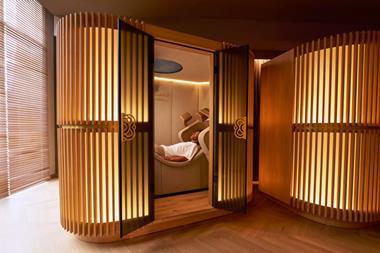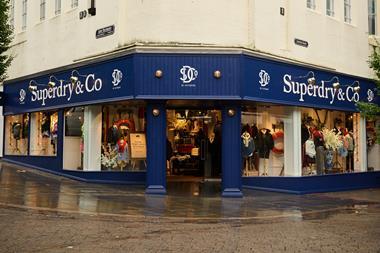What can a retailer or developer do when its market appears to be disappearing? The most obvious answer is to change what you offer, but this is more easily said than done. If a retail brand has been around for any length of time, it is a fair bet that its name is so closely associated with a certain form of retailing, that any kind of alteration may well be rejected by ungrateful shoppers.
There is, of course, the total reinvention route, but this is tantamount to starting over and may well involve a name change, new shops and a shift of product range or even category. If all this is done a new chain has effectively opened and all traces of its forerunner have been erased.
Now consider the dilemma facing outlet centres. Until relatively recently, these were the places you visited to buy clothing predominantly – usually last season’s, at a substantial discount to what could be found on the high street. Almost universally, they were located well away from towns and cities, the logic being that developers and planners did not want urban shoppers to be drained away from high streets, while outlet centre owners needed prolonged visits and, if consumers travelled, it was felt that they would linger longer.
The outlet sector flourished for a considerable time, but the continual rise of high street discount chains meant that the ground was progressively being swept from under outlet centre owners’ and developers’ feet . There was also a creeping suspicion that much of what was on offer was made to order for the outlet centres by the big brands and was therefore not quite the bargain that it might appear.
Given this background, you might be forgiven for thinking that the outlet sector would have died a quick and perhaps unmourned death, consigned to the retail scrapheap. Outlet centres are, however, flourishing and perhaps the best place to see how this retail arena is faring is Italy, which has more of this kind of activity than almost anywhere else on the continent. Much of this is down to McArthurGlen, the outlet centre owner and developer that has been operating across Europe for more than a decade and whose centres go a long way towards defining the present state of play.
About half an hour’s drive from Florence is one of its latest schemes: Barberino. Approached from the motorway slip road just beyond the centre, it looks, to all intents and purposes, as if you have arrived at a Tuscan village. The curious thing about this village, however, is that all of its lower levels are shops and the upper storey of every house in the village is empty. There is something of the spaghetti western film set about this, except that it all looks a good deal more realistic.
McArthurGlen international development director Tony Vasishta says that a starting point for any new scheme put together by the developer is its architectural content. “Every scheme is different – we try to make them appropriate to the location,” he says.
And, in practice, this means rather more than just throwing up a series of buildings in a pastiche of a local architectural style. At the 226,050 sq ft (21,000 sq m) Barberino scheme, to get to the shops, you need to cross a wooden bridge linking the car park with the retail offer. Beneath the bridge is the modestly-sized river Sieve. It has been slightly diverted from its original course so that it runs alongside Barberino’s exterior. At the far end of the river is a white totem, topped by a logo with the words Barberino Designer Outlet. You may be in a Tuscan village, but there is no room for doubt about its purpose.
RESIDENT DESIGNERS
As in all the best villages, there is a high street and, as in all the best-planned retail developments, this has been zoned. At one end are some of the more familiar sports brands – adidas, Fila and CK Jeans for instance – while midway along the street are luxury names that those who frequent Sloane Street will recognise. Of the latter, Prada and Missoni are the most iconic and, on the midweek day of visiting, Florentine out-of-towners were heading straight for these units. Vasishta produces an unusual statistic. Apparently, marginally more men than women visit Barberino and they spend rather more on their clothing: this is Italy, after all.
Walk a bit beyond the big designer names and you enter a zone where a number of the brands might appear strange to British eyes and where prices are somewhat lower than in the rest of this ribbon development. But then, as Vasishta says, the intention is that a designer outlet development should be accessible to all budgets – it really is about a branded day out.
The architecture also shifts as you progress through the village. At either end, the buildings are less flamboyant than in the middle, where the big designer names are situated. At the scheme’s heart is a central square with a Palladian-style vaulted arcade running along one side. The sense of space, heritage and luxury seems appropriate to the upscale offer, albeit sold at a discount. And overhead, the roofs have been covered in the warm, red tiling that everybody associates with a Mediterranean environment.
Vasishta says that much is done to encourage retailers that take units within the scheme to conform broadly to a design template, both internally and externally. This takes the form of persuasion rather than coercion, however, and McArthurGlen has an on-site management team that works with its tenants.
Now head up to Italy’s far north, to Liguria in the Alpine foreland, and between Genoa and Milan lies Serrevalle, a small place that is home to Europe’s largest outlet centre. Once more, this is a McArthurGlen enterprise and, at 403,660 sq ft (37,500 sq m) and boasting 170 shops, it is of a different order of magnitude to Barberino.
Just ahead of opening time, the car park is already beginning to fill up and shoppers have a choice between a fairly old and downmarket-looking shopping development across the road and the Serrevalle outlet centre. The great majority seem to be heading towards the latter, drawn by a combination of impressive architecture and brands such as Bulgari, Salvatore Ferragamo and Dolce & Gabbana – not the kind of names you might normally associate with this type of retailing. As Barberino is Tuscan in feel, so the architecture here is in the opulent Ligurian style, with fountains, colonnades and courtyards throughout.
And once shoppers are here, they tend to stay. Vasishta says that the average dwell time is more than three hours and that, for many, a visit to Serrevalle is an event in itself. McArthurGlen has another centre on the outskirts of Rome, and Naples and eastern Sicily are both poised to welcome shoppers to new schemes in the near future.
Italy probably has a distinct advantage when it comes to selling brands, allowing for the locals’ preference for togs with a fancy label, but these outlet centres show that the concept is far from defunct and has been, more or less, reinvented over the past few years.
Simple, then. When things look tricky, head upmarket in everything you do and you can’t go wrong. For outlet centre operators, there is the added bonus that the new Europe and burgeoning wealth of developing economies in the East mean that there is plenty to be going at. There is everything to play for and, if you happen to be near a UK scheme, it’s probably worth a visit just to see how things have changed and, maybe, to do a little shopping.


























No comments yet